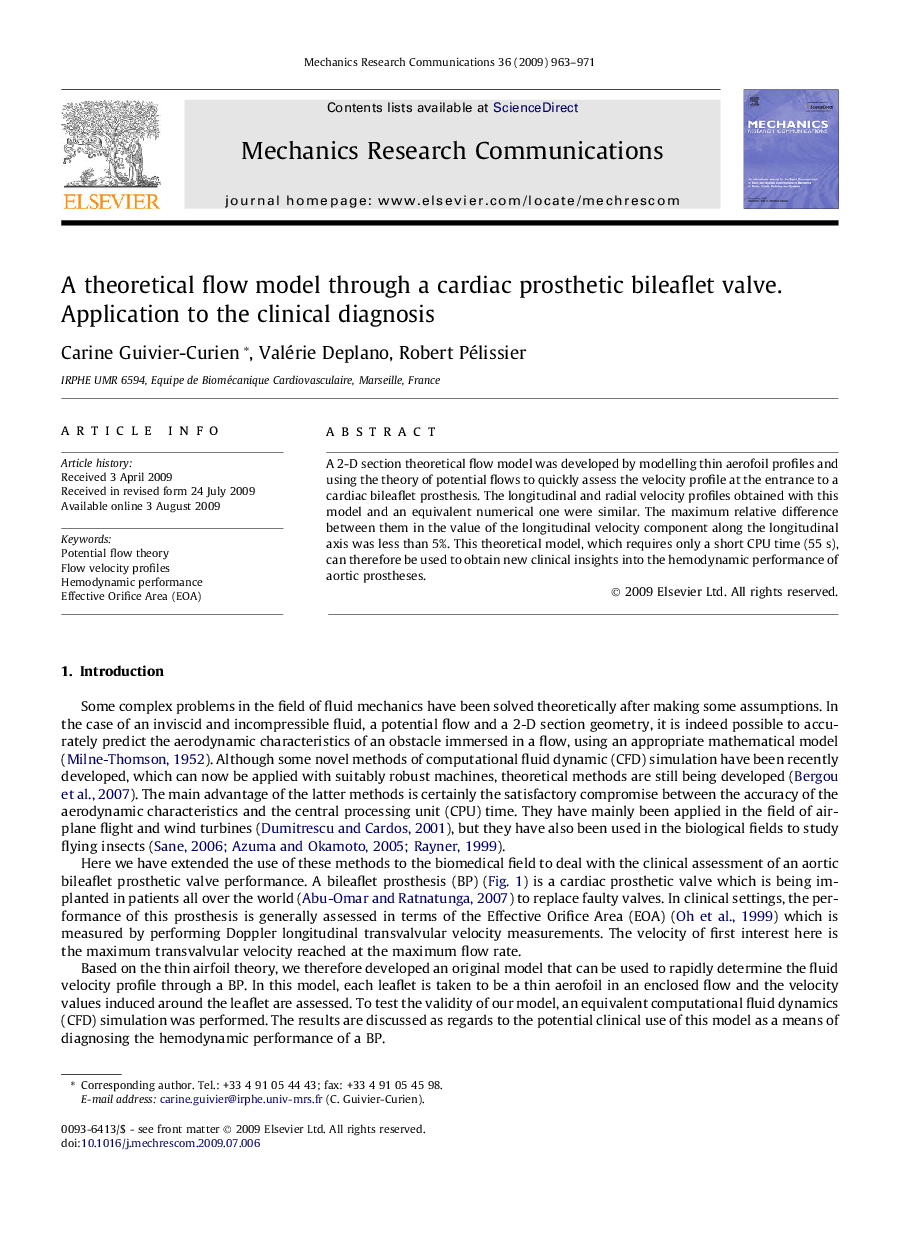| Article ID | Journal | Published Year | Pages | File Type |
|---|---|---|---|---|
| 801714 | Mechanics Research Communications | 2009 | 9 Pages |
Abstract
A 2-D section theoretical flow model was developed by modelling thin aerofoil profiles and using the theory of potential flows to quickly assess the velocity profile at the entrance to a cardiac bileaflet prosthesis. The longitudinal and radial velocity profiles obtained with this model and an equivalent numerical one were similar. The maximum relative difference between them in the value of the longitudinal velocity component along the longitudinal axis was less than 5%. This theoretical model, which requires only a short CPU time (55 s), can therefore be used to obtain new clinical insights into the hemodynamic performance of aortic prostheses.
Keywords
Related Topics
Physical Sciences and Engineering
Engineering
Mechanical Engineering
Authors
Carine Guivier-Curien, Valérie Deplano, Robert Pélissier,
